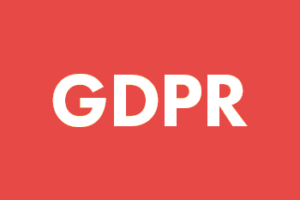You’re doing everything right, or so you think. But your organic traffic feels sluggish.
Your competition is ranking higher on the search result pages and your not sure why.
The truth is, you are likely committing some link building sins which really cause problems for your SEO.
Link building is about quality, not quantity of links.
Mistake #1: Obsessing Over High Domain Authority Sites
Don’t chase DA 90+ websites around. But, believe it or not, its actually harming your SEO.
Domain Authority is not 100% relevant for Google. Remember that Moz created DA rankings not Google. If you only go after high DA sites, then you will miss out on thousands of other relevant opportunities that will send real traffic.
What is more important? A link from a DA 30 website that is in the same niche as you or a DA 80 general website that hides your link and you never get any traffic?
How to Fix
Focus on opportunities vs DA scores. But ask yourself: is this website informative and relevant to my ideal customer? If so move forward, regardless of DA.
Mistake #2: Neglecting The Relevance and Context of the Link
A site linking to you needs more than Good DA. It needs relevance.
It makes no sense to get a link from a site that sells pet grooming if you sell accounting software. Google penalizes sites for what they see as irrelevant links.
Context also matters enormously. Is your link organically integrated with the content of an article or uncomfortably jammed in the wrong place?
How to Fix
Consider if the link meet the needs of your human readers? Is the surrounding context relevant to what I am offering?
If you can’t answer yes, don’t bother with it.
Mistake #3: Never Use Manipulative Anchor Text Techniques
You want to rank for a specific keyword phase so you get a ton of links that exact keyword phase. You think you’re being strategic.
This linking strategy worked in 2010 with exact match anchor text. However, now Google’s algorithm is specifically on the lookout for this type of artificial anchor text footprint. Using the same anchor text keyword too often will raises a red flag.
Natural Anchor Text Distribution
Links are natural, therefore, and use a wide array of language — brand names, “click here,” “this article” or partial keywords mixed with other words. They very seldom use exact target keywords other than when the content makes sense.
Building Natural Profiles
Use diverse anchor text. Include your brand name frequently. Include anchors like “read more”. Use target keywords sparingly, don’t keyword stuff.
Mistake #4: Being Part of Link Schemes and Farms
You have probably heard it before: pay me $500, and I’ll give you 100 awesome backlinks in 48 hours. Your rankings will skyrocket overnight.
Then you get a disaster instead of magic. Google spots the search engine ranking manipulation and slaps penalties on your site.
Red Flags to Avoid
Guaranteed links in unrealistic time framesNetworks that have patterns of linking between sitesThin Content with no value but for outbound linksSuspicious registration or hosting information
The Legitimate Path
Focus on earning links naturally:
Content people will honestly enjoy and want to share.Develop real industry website friend-relationshipsOffer expert insights to journalists
Mistake #5: Neglecting Internal Link Building
You fixate on outside backlinks, overlooking low-hanging fruit.
Internal linking is the most underrated SEO tactic. You control these links completely. You can create them immediately. They’re free.
Strategic Implementation
Pass link juice from high ranking site pages to the pages that need boost ranking. Use descriptive anchor text. Build content hubs that revolve around specific topics and reinforce articles connected through strategic links.
Internal links help pass authority from one page to the other and are vital in showing both search engines and your readers what pages are important.
Mistake #6: Not Paying Attention to Link Quality and Spam Signals
You find a website that looks decent for a link. You accept without digging deeper.
Links from poor quality websites can harm your SEO.
Here are some things to look out for:
Hidden Spam Indicators
Thin content with obvious keyword stuffingUnnatural linking patterns to spam networksSuspiciously new domain registrationHosting on servers known for spamUnrealistic publishing frequencies
Due Diligence Checklist
Before accepting links, investigate:
What other sites link here?What type of content do they usually post?Do social profiles seem genuine?What’s their traffic pattern?Any visible manual penalties?
Mistake #7: Focusing Only on Follow Links
You don’t even look consider nofollow links since you think they are worthless. If you only look at follow links then missing out on linking opportunities.
An all dofollow link profile actual look as suspicious as all nofollow link profiles.
The Natural Mix
Genuine sites will get real value from content that links to both dofollow and nofollow links. Social shares are typically nofollow. Most authority sites tend to nofollow their outbound links.
Beyond SEO Value
Nofollow links coming from High Traffic sites, bring referrals and traffic that converts. They foster positive relationships for future opportunities. They deliver business benefits that go beyond SEO metrics.
Building Sustainable Strategy
Good link building — which is to say, sustainable link building — means more than a little old-fashioned self-promotion. Think about the publications your particular audience would be reading and get links from them.
Create linkable content. Becoming a source for good content means websites will naturally link to you.
The post Common Link Building Mistakes That Are Killing Your SEO appeared first on SiteProNews.


